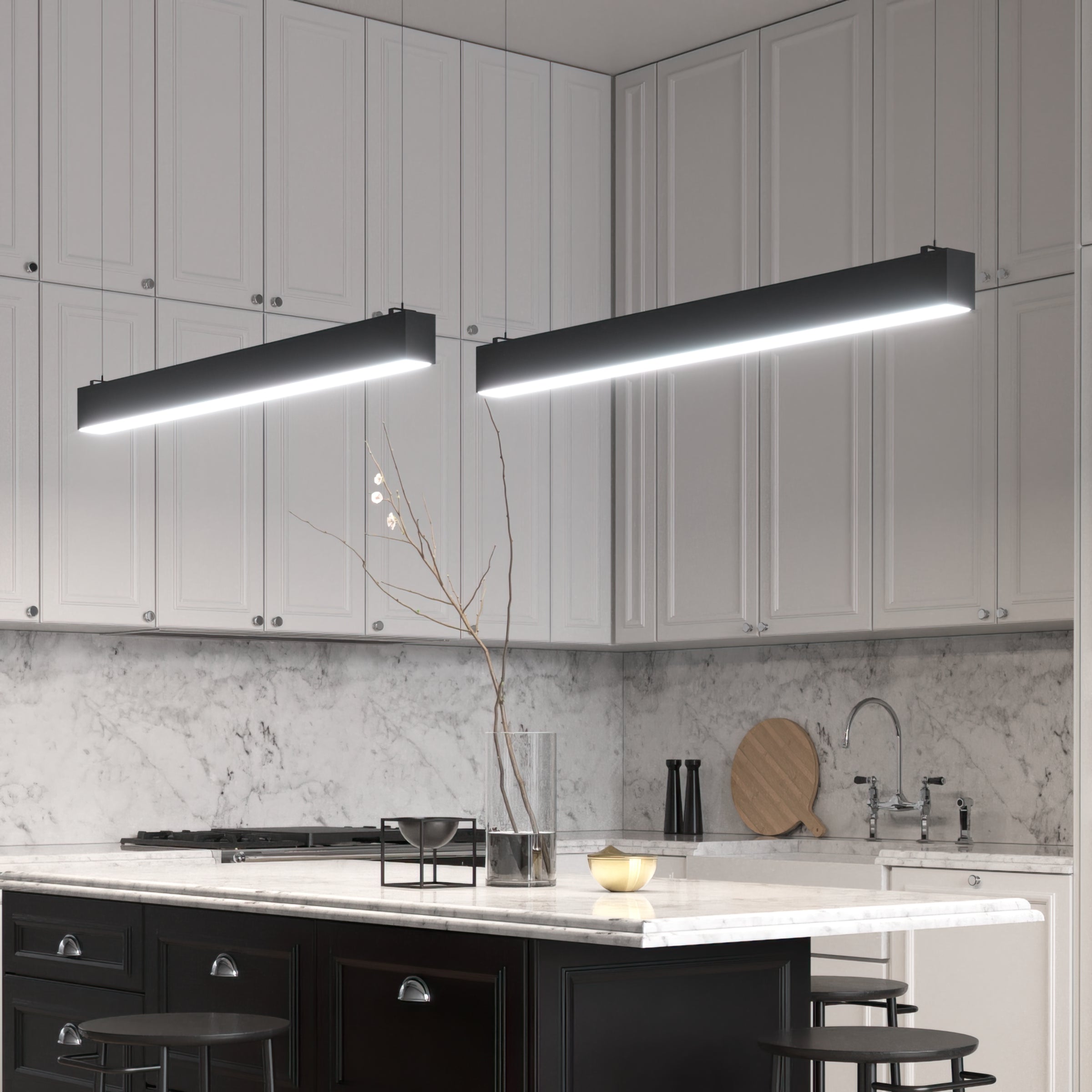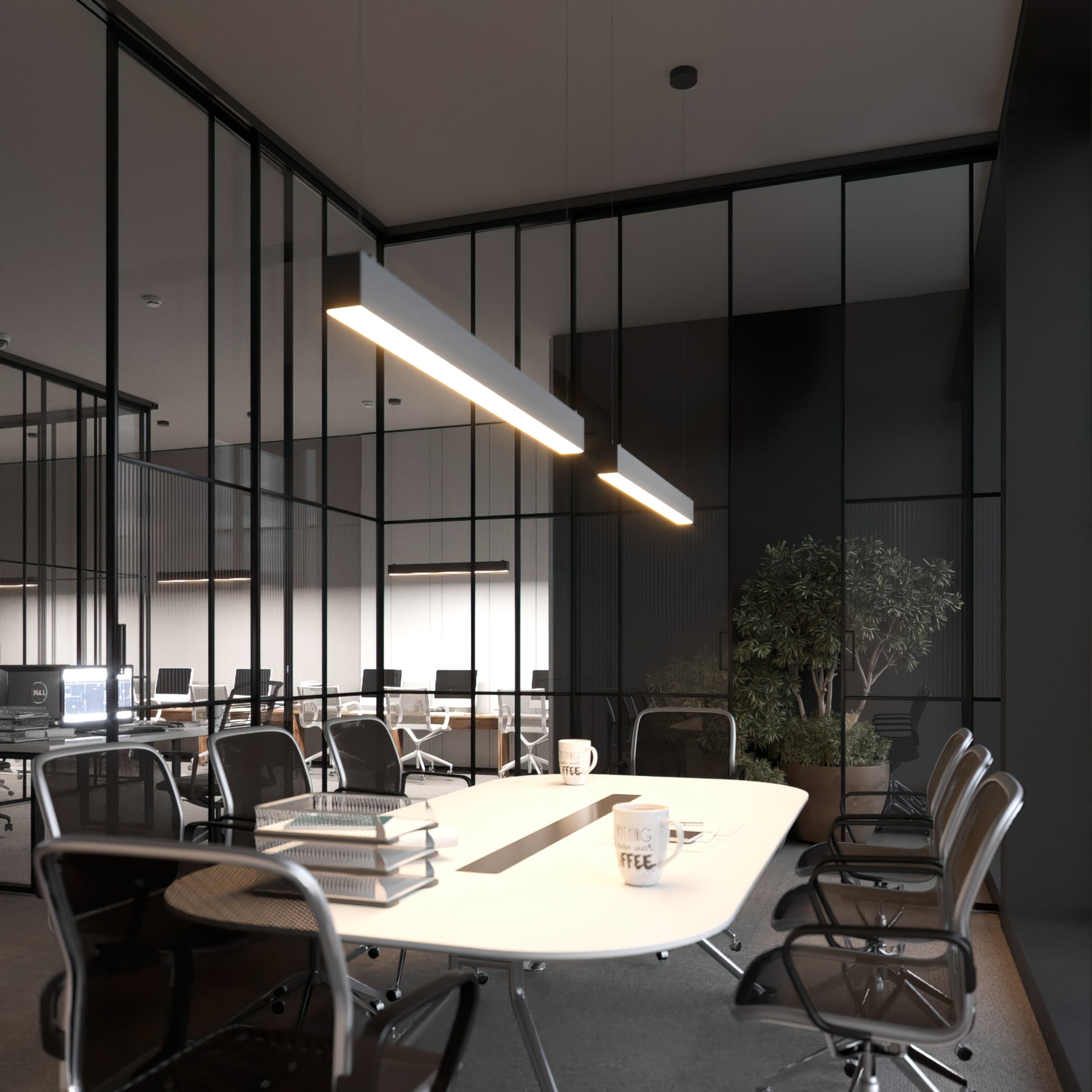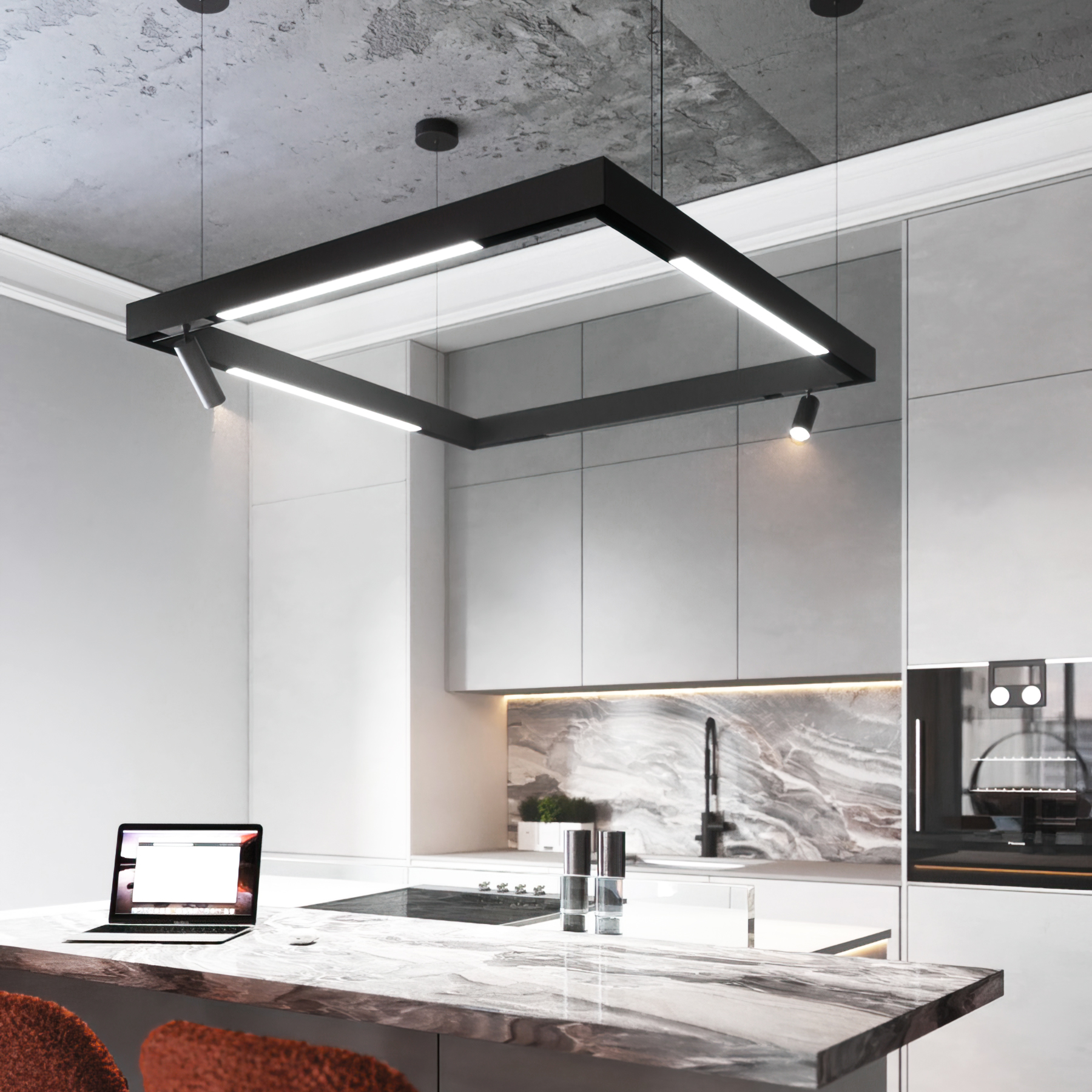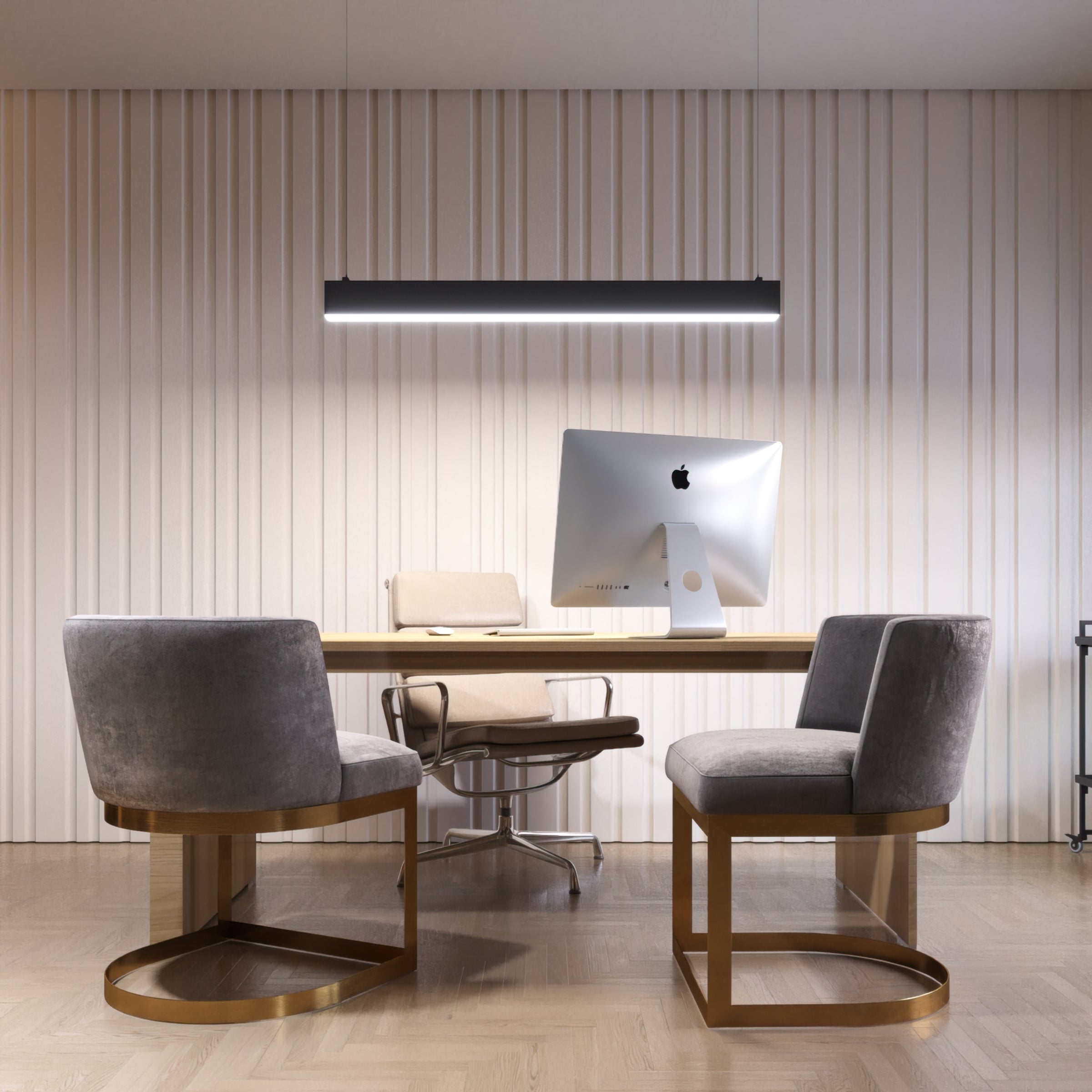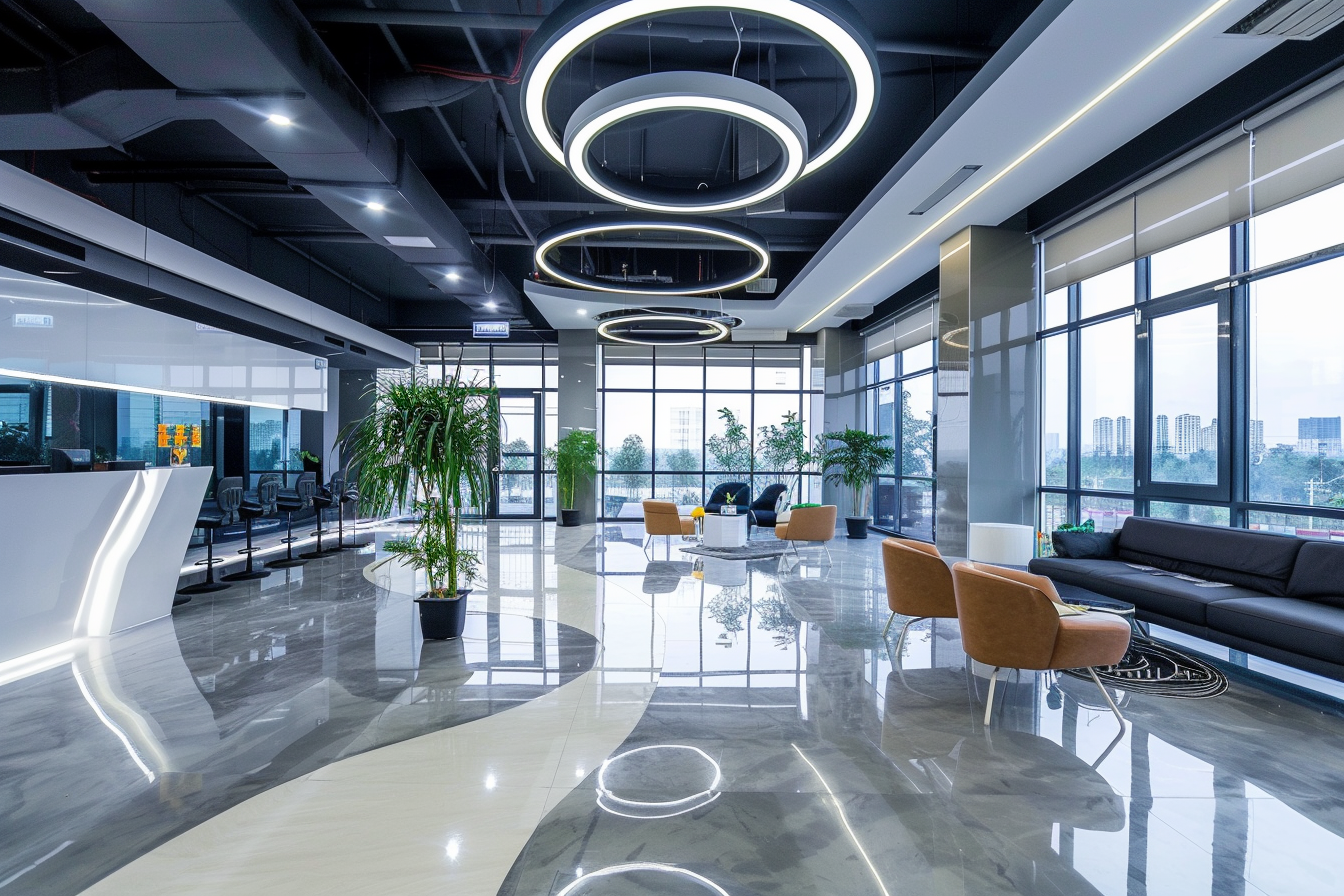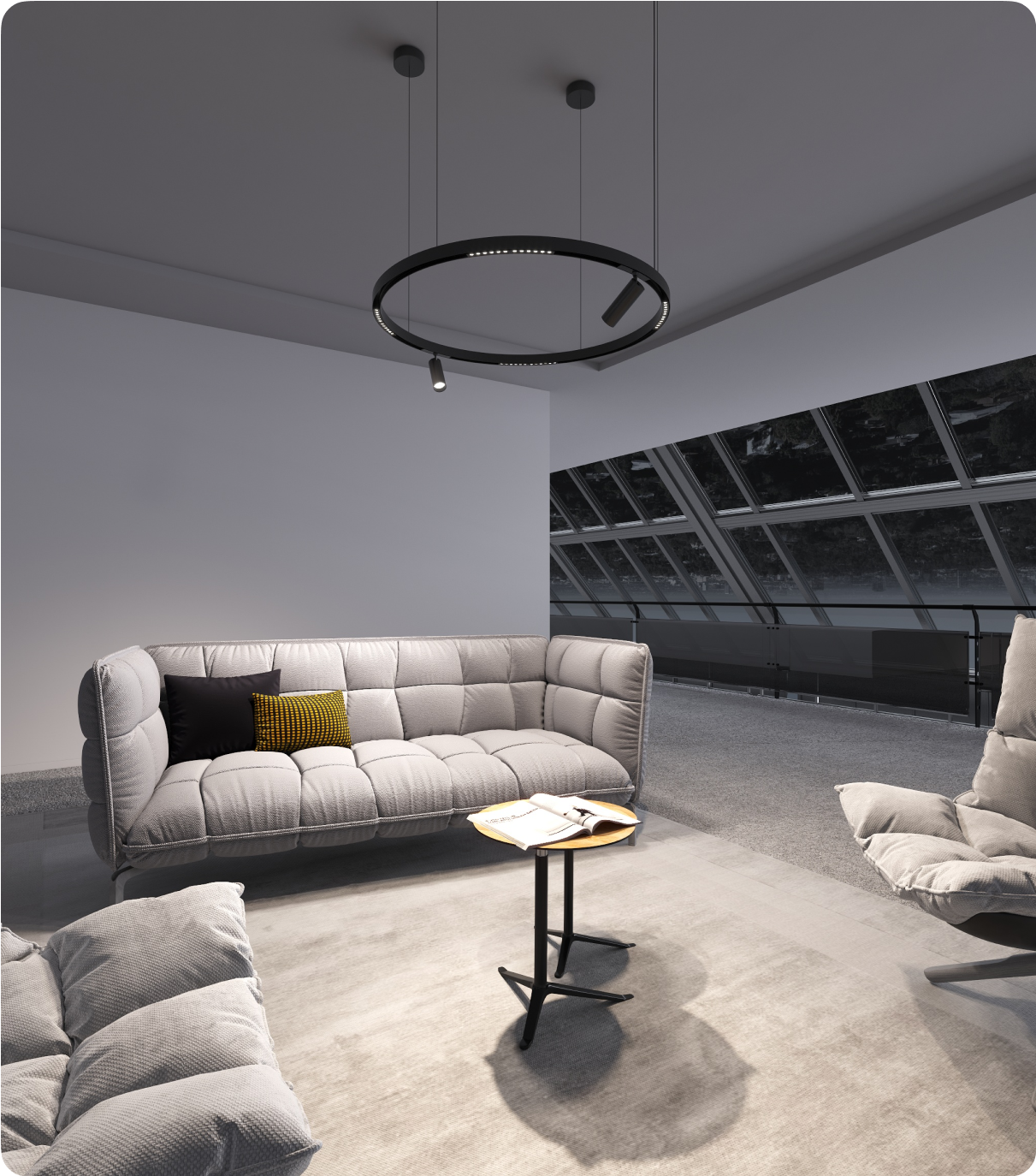While it's important for health to get enough sunlight, most people can't spend their entire day outdoors. In fact, Americans are indoors about 90% of the time.
Human-centric lighting is a design philosophy that focuses on the benefits to people in a specific space. It takes cues from our primary light source, the sun, to blend natural and artificial light in a way that simulates its effects. One of its key features is its capacity to enhance the comfort in a space.
Before the rise of industrialization, humans followed the natural cycle of light throughout the day. Nowadays, most people are exposed primarily to artificial light, which is unchanging. Often, artificial light is too dim during the daytime and too bright at night, disrupting the circadian rhythm and raising the risk of health issues. The correct color and intensity of light at the right time of day are essential for optimal living.
For many years, the lighting industry focused almost exclusively on technologies, solutions, and products that cater to our visual needs. The discovery of a third type of photoreceptor in human eyes, in addition to rods and cones, and evidence of light's biological influence led the lighting community to consider the connection between light, health, and well-being.
What Is Human-Centric Lighting?
Human Centric Lighting design represents a groundbreaking and innovative approach to lighting, specifically designed to complement and support the human biological clock. With the advent of technological innovations such as LED lights and digital control systems, HCL has been able to provide and cater to the evolving lighting needs of the contemporary world through human-oriented designs. This approach to lighting signifies a substantial cultural shift and aims to promote a healthier, more harmonious interaction between humans and their constructed environments. HCL ensures personalized adjustments in light temperature and intensity throughout the day and even possesses the capability to artificially replicate the natural lighting conditions we experience outdoors. At the same time, the benefits and healthful properties of natural light are irreplaceable and unparalleled. HCL endeavors to mimic these characteristics as closely as possible and combines them productively with the capabilities of other artificial light sources.
HCL transcends the confines of merely fulfilling people's basic visual needs and aims to support the human body in maintaining alignment with its natural circadian rhythms, which humans have adapted to over centuries. A few hundred years ago, our forebears spent the majority of their time outside, under the sun, their internal biological clocks finely tuned to the earth's 24-hour cycle of ambient changes. In the present day, the amount of exposure we have to outdoor daylight has significantly diminished, potentially leading to circadian disruption. This disruption has been linked to an increase in various disorders and diseases, often exacerbated by inappropriate exposure to artificial light.
The principles and philosophy of HCL extend beyond pure lighting. The process begins with the effective setting of design goals and involves meticulous decision-making throughout the entire lighting design process. This process initiates with the conceptualization of the project and continues through to the prioritization of design goals, the architectural design (which includes considerations of daylighting design), the specification of lighting equipment, the commissioning, and finally, the operation of the lighting systems. The successful implementation of HCL requires the dedicated commitment of all those involved in the building's design, construction, and operation, including its occupants. It is a holistic approach that fuses technological innovation with human needs.
The Benefits of Human-Centered Lighting
- Effect on Mood
HCL lighting can potentially improve sleep and enhance productivity, which could lead to an overall increase in happiness. It may also directly uplift mood, especially for those affected by Seasonal Affective Disorder (SAD), a condition experienced by approximately half a million Americans, primarily during winter. While women are more likely to have SAD, it can affect anyone, including children.
Since the early 20th century, light therapy has been used to treat various conditions, including sleep disorders. Nowadays, people use light boxes to simulate sunlight and alleviate SAD symptoms. These boxes emit a bright white light that convinces the brain it's receiving sunlight. It's recommended to use these boxes in the morning, preferably before 10 a.m., for at least half an hour daily.
Given what we know about sunlight, SAD, and light therapy, it's plausible to suggest that HCL can contribute to an environment that boosts mood. Whether implemented at home or in the workplace, HCL could help individuals feel more joyful and energetic throughout the year.
- Effect on Productivity
Numerous comprehensive studies have diligently examined the significant impact of the quality and type of lighting on productivity and performance. This is particularly evident when classroom environments transition from traditional fluorescent lighting systems to more modern, energy-efficient LED lighting.
Typically, this transition tends to result in a noticeable enhancement in students' academic performance. This boost in performance is not merely limited to academic grades but also extends to the overall morale of the students, their concentration levels, and their confidence in their own abilities. This dramatic improvement is likely because LED lighting provides a cleaner, clearer source of light that reduces strain on the eyes.
Moreover, a particularly intriguing observation is that students' reading abilities appear to improve markedly under lighting conditions that closely resemble the color temperature of natural daylight. This probably stems from the fact that our eyes are naturally adapted to perform best under the conditions provided by natural light.
Furthermore, the versatility of LED lighting systems is another major advantage. They can easily adjust the color temperature throughout the day to emulate the natural variations of daylight, thereby creating a more comfortable and conducive environment for learning and working.
For example, in an office setting, to counteract the common post-lunch drowsiness that many employees experience, the lighting can be strategically modified to a cooler color temperature. This minor adjustment can have a profound effect, stimulating the brain to foster focus, concentration, and alertness. As a result, employees' performance and overall efficiency can be significantly increased, thereby improving the productivity of the entire office.
- Effect on Circadian Rhythms and Sleep
Human beings operate on a daily rhythm of sleep and wakefulness, which is regulated by light. Human-centric lighting design acknowledges this natural circadian rhythm, bringing in variations in light intensity and color temperature to mirror the 24-hour day and night cycle. Notably, exposure to blue light can suppress the body's production of melatonin, a hormone that signals it's time for sleep. The color and intensity of light can significantly influence one's mental and physical state. By integrating natural daylight and an effective artificial lighting plan, a balanced and healthy indoor lighting environment can be achieved.
Various studies have highlighted the effect of light exposure on sleep patterns:
A study in the journal Sleep Health found that office workers exposed to high levels of light in the morning experienced better sleep quality and fell asleep quicker at night than those exposed to lower levels of light in the morning. Additionally, high amounts of light during the day were linked with lower depression levels. This suggests that morning light helps to reset circadian rhythms, aiding an easy wake-up and encouraging sleep at night.
Research in 2018 showed that bright light in the evening suppressed the production of melatonin in preschool children. The suppression lasted for nearly an hour after the removal of the light. These findings suggest that Human Centric Lighting (HCL) could assist children in getting necessary sleep and support their healthy development.
The Lighting Research Center (LRC) found that exposure to various levels of blue light at night was linked with suppressed melatonin production and increased alertness, indicating the crucial role of the circadian system in maintaining alertness at night.
Another study by the LRC showed that light manipulation can affect sleep patterns. Participants who were exposed to bright light in the morning and dim light at night were more awake in the morning and more tired at night compared to those who received dim light in the morning and bright light at night. This further emphasizes the impact of light on sleep.
Practical Application of Human-Centered Lighting
- In the Morning
Begin your day with a minimum of one hour of natural light. This action can regulate your circadian rhythm and potentially enhance your mood, productivity, and sleep quality. Exposing yourself to low light levels with low Correlated Color Temperature (CCT) transitioning from 2500K to 4000K can aid in suppressing residual melatonin, providing a vigorous start to your day.
- At Midday
When cortisol levels reach their peak around 10 a.m., it's best to have natural white light varying from 4000K to 5500K. To alleviate the midday dip and boost focus, use intense lights with a Correlated Color Temperature (CCT) between 5500K and 6500K at midday. Light with a high color temperature that is calming and pleasant can have the desired result. Also, it's advantageous to periodically step outdoors during the day.
- In the Evening
As evening approaches, the use of warmer color temperatures is suggested.
Starting from around 2 p.m., one can use natural white light (4000K – 5500K) and gradually shift to warmer color temperatures (2500K – 4000K) to mimic natural light.
Nighttime lighting in personal spaces should ideally consist of low light levels and low Correlated Color Temperature (CCT).
At sunset, it's recommended to turn off screens like televisions, tablets, and mobile phones. To minimize exposure to blue light before sleeping, consider reading a book under the gentle light of a warm LED lamp. If you prefer reading on a phone or tablet, utilize an app or built-in feature that reduces blue light emission from the screen.
